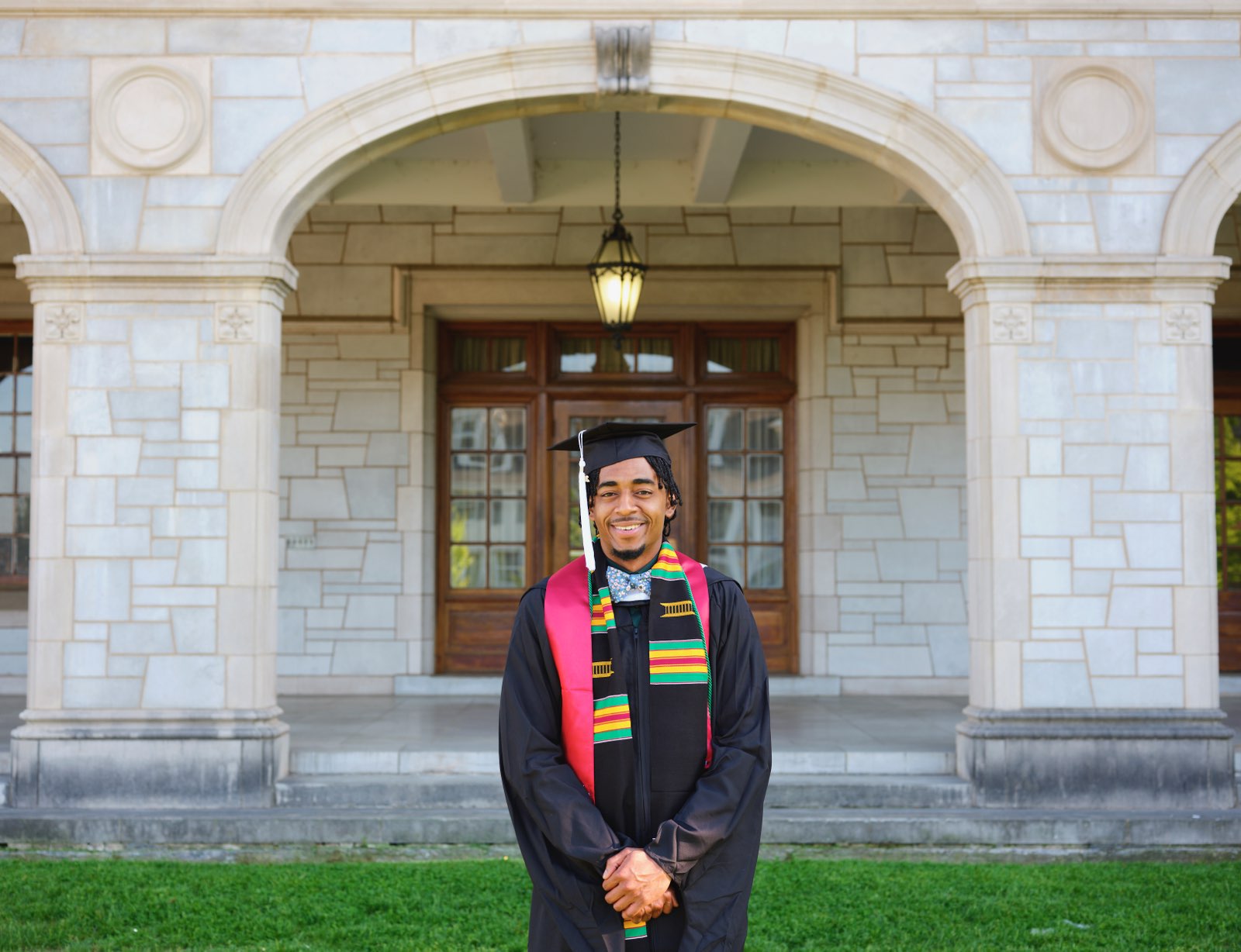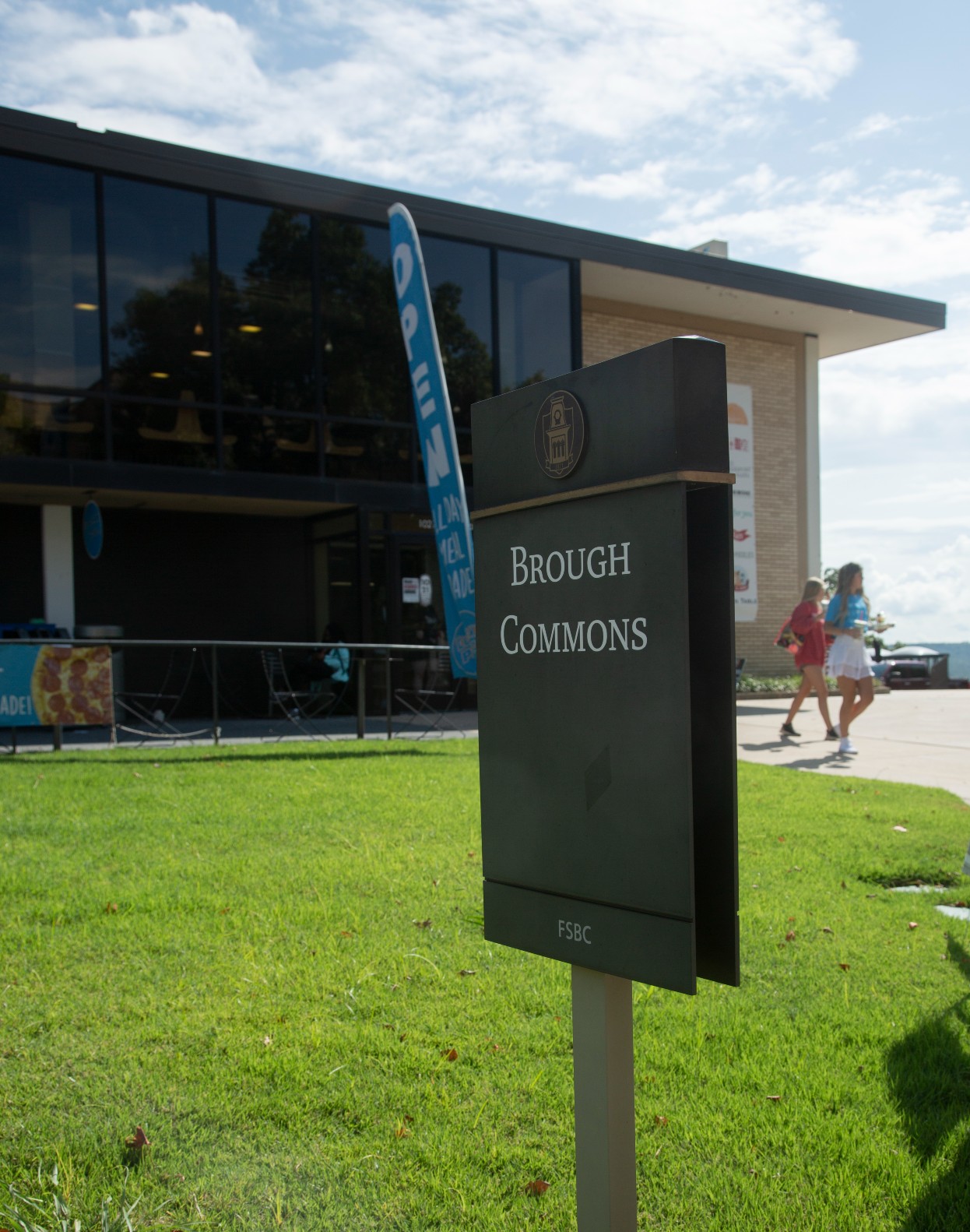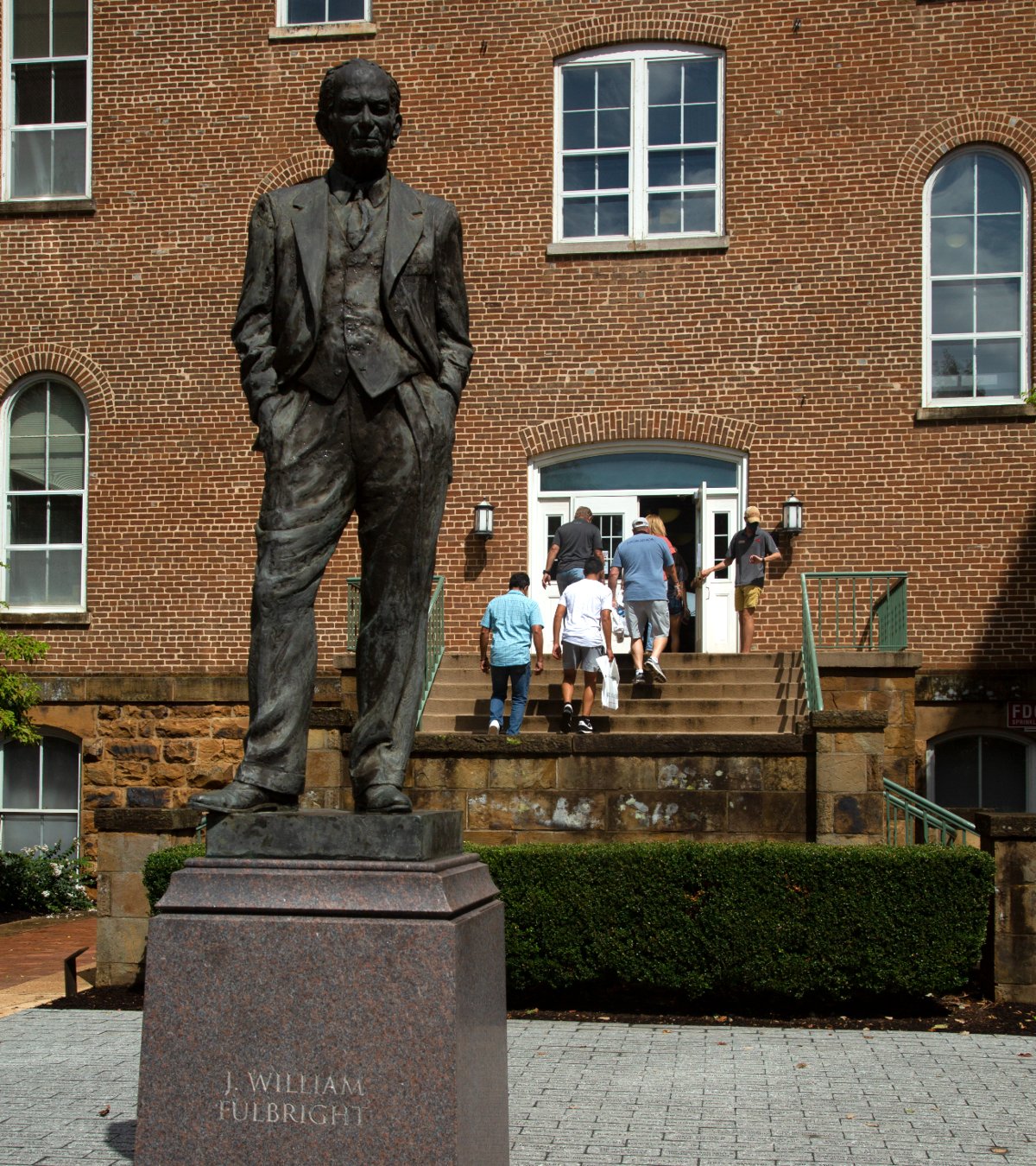Although he’s been dead for 26 years, it’s likely U.S. Sen. J. William Fulbright’s name got mentioned more at the University of Arkansas at Fayetteville campus this past school year than it had since he was its president, in 1941.
Last summer, the university created an advisory committee of students, faculty, staff and alumni to “Evaluate J. William Fulbright's Presence on Campus” in light of growing debate over the senator’s record on race. In April, after months of discussion, the panel recommended the university remove a bronze statue of Fulbright from the west entrance to the iconic Old Main building. It also recommended renaming the J. William Fulbright College of Arts and Sciences, the university’s liberal arts arm. (The college received the name in 1981, after the UA received a $1 million gift from the Stephens Charitable Trust.)
But when students return to classes next week, Fulbright’s statue will still be there.
On July 28, the UA Board of Trustees voted to keep both the college name and the statue intact. Trustees did adopt a third, less controversial recommendation made by the panel — to remove the name of former Gov. Charles Brough from a school dining hall. Brough played a key role in the Elaine Race Massacre, a spasm of racist violence in 1919 in which white Arkansans killed more than 200 Black people.
The only change the board made regarding Fulbright was to tell UA-Fayetteville administrators to add “contextualization” to the statue “that affirms the University’s commitment to racial equality and acknowledges Senator Fulbright’s complex legacy.”

Fulbright, who served in Congress from 1943 to 1974, does have a complicated record. A staunch internationalist, he helped lay the groundwork for the creation of the United Nations, established the international scholar exchange program that still bears his name and was perhaps the Senate’s most vocal opponent of the Vietnam War. He also repeatedly capitulated to segregationists among his fellow Southern Democrats. Fulbright voted against foundational civil rights legislation in 1957 and 1964, and he added his signature to the Southern Manifesto, a document that championed separate schools for white and Black students.
By the time the UA board met in July to discuss the Fulbright issue, they may have had little choice but to go against the advisory committee’s recommendations. Arkansas legislators in April passed a law making it illegal to move historical monuments without first getting clearance from the Arkansas History Commission. A legislative hearing in June, in which Republican lawmakers berated then-Chancellor Joseph Steinmetz about the possibility of moving the statue, made clear the issue had become highly politicized. (Steinmetz, who created the advisory committee, abruptly resigned on June 18 under circumstances that remain mysterious.)
A year later, students and others who served on the committee — at the university’s request — are left wondering: What was the point? The undercurrent of resentment that sparked the controversy over Fulbright’s name on campus remains. After a series of discussions that lasted nearly a full academic year, some at the university now feel more frustrated than before.
“So where does this leave us?” asked Warrington Sebree, a recent graduate. “Black students must continue to walk past a statue that celebrates a man that would've fought to keep us out.”
Sebree was among the UA-Fayetteville students who advocated for removing the statue and changing the name of the college. Although he was asked to be on the committee last summer, Sebree said, he declined because of a busy schedule that included prepping for the LSAT. He completed his master’s in political science this spring (along with a certificate in African-American Studies) and will soon begin law school at Howard University.

The Fulbright issue was a missed opportunity for progress, Sebree said, and the board’s decision confirmed his sense that the UA is fundamentally racist.
“This is not calling any individual racist, but the institution itself,” he wrote in an email. “It was founded as such, it has been maintained as such, and this decision shows that it has no plan to change. Black students have no power, no agency, and no trust and support from administrators.”
A power differential bigger than any statue
Last summer, after the murder of George Floyd sparked protests across the nation, a hashtag began trending on social media in Fayetteville: #BlackAtUARK. Black students began sharing stories large and small about experiences of exclusion and discrimination on the mostly white campus. Some began discussing the memorialization of Fulbright as an example of the university’s failure to make Black students feel welcome, and a petition began circulating online.
According to Caree Banton, an assistant professor of Afro-Caribbean History, #BlackAtUARK should be credited with forcing the university to have a conversation about Fulbright.
“Well, the hashtag was everything,” she said. “Because the only thing that the institution really responds to is public embarrassment.”
Banton served as a faculty panelist for the committee and voted in favor of all three points — removing the statue, removing Fulbright’s name from the college and removing Charles Brough’s name from the dining hall.
“The university currently has a 4.4% African American student population in a state that is over 15% African American. So for a senator that ultimately advocated for segregation, and to keep not only Black Arkansans away from the University of Arkansas, but essentially all Black people from those kinds of educational spaces, I think it's incumbent on an A1 research institution to take those kinds of steps in righting past wrongs,” she said.
The Southern Manifesto signed by Fulbright was a declaration against integrating public schools. It was drafted in the wake of the U.S. Supreme Court’s landmark 1954 decision in Brown v. Board of Education, which ordered school districts to desegregate across the country. The manifesto encouraged resistance to integration “by any lawful means” and served as a rallying cry for those opposed to equality for Black Americans in the 1950s and ’60s.
Fulbright’s legacy is more nuanced than that of, say, the Confederate soldiers and generals memorialized in many Southern cities. But Banton and others argue his record on civil rights cannot be ignored, despite attempts to downplay this unsavory part of his past.
“Half the students don't know what Fulbright is and what he has done, because the university props up this idea of him being this international man of peace while he was wreaking havoc on his fellow American men and women at home,” Banton said.
Despite Black students serving as volunteers on a committee that met for many hours over the span of a year, it’s the board of trustees who ultimately made the decision. (Nine of the board’s 10 members are white; its chairman, Dr. Stephen Broughton, is Black.)
“The students pointed out an issue and they are ultimately not going to be involved in the finality of how the issue is dealt with,” Banton said, before the trustees’ July vote. “Who are the members of these boards? How do they get there? These are all questions that ultimately have to do with power differentials when we're trying to solve problems in institutions.”

When asked for comment on the Fulbright issue, UA spokesman Mark Rushing referred to a letter sent from university leaders to the “U of A community” in late July, following the board vote. (At the time, Bill Kincaid was acting chancellor; on Aug. 16, he was replaced by interim chancellor Charles Robinson.)
“It is our duty to continue to advance the larger conversation that resulted from concerns about the university’s association with [Fulbright and Charles Brough],” the letter said. “From this conversation we determined we can and should be doing more to create a stronger sense of belonging among the campus community.”
Changes were to include a new visiting faculty program, a new scholarship program and a new space for “traditionally unhoused Greek chapters whose membership is primarily minority-based.” The university also would be “expanding recruitment and retention plans for diversifying the campus on all dimensions.”
“Ultimately, I want you to know that the well-being of our campus community is always our highest priority,” Kincaid wrote. “When faced with disagreements, we won’t always agree on the best way forward. But we will always do our utmost to ensure that our students, staff and faculty know that we are glad they are here and want them to succeed in their work and their studies.”
Student voices
The letter from university leadership also noted the board of trustees’ directive to add context to the Fulbright statue. But Sebree, the former student who declined to serve on the committee, questioned the sincerity of that plan.
“I'm having trouble understanding what administrators believe ‘context’ will do for us now, in this moment,” he wrote in an email. “Let's say every person in Arkansas learns he was a racist, now what? What do they expect people to do with this information?”
“The university should have already taught about his legacy, they should have already given context, and they should have already denounced his racist ideologies (which they still have not yet explicitly done),” Sebree said. “And now that this has not happened, we are expected to be satisfied with the lackadaisical efforts to teach people about his ‘entire legacy.’ ”
Sebree believes a committee shouldn’t have been formed in the first place — that it ended up serving as a performative gesture with no substance.
“The students on that committee sacrificed their time,” he said. “Black students were essentially forced to sit there and listen to people come in and invalidate their feelings.”
Three Black students who served on the panel expressed doubts that the exercise was worth the time and effort involved.
Tyrah Jackson, a rising senior majoring in anthropology, criminology and English on a pre-law track, said some students on the committee felt they couldn’t express their experiences when discussing Fulbright’s legacy with historians.
“It's like, ‘OK, yeah, you may have done that. But I'm Black. I'm telling you how I feel.’ I don't know what his credibility has to do with my feelings. And it became so overwhelming that I started not attending a lot of the meetings.”
“I know I'm not the only student who didn't feel like I could speak freely,” Jackson said. “It started to feel like a distraction from hiring more Black faculty and staff, hiring more Black counselors, from getting more funding for Black students.”

Tamara Kuykendall, a former track athlete and current graduate student in higher ed, served on the committee without really knowing much about Fulbright’s past.
“I didn’t really know who this man was. When I got to the campus I saw his name on the building. I heard he had a big scholarship for students but I didn’t really know anything about him until the Black Student Caucus put out its demands,” said Kuykendall.
“I don’t understand the need to have created the committee,” she said. “At the end of the day I think the institution needs to best serve its current students, not older alumni who get their panties in a wad.
“I think in the future if there’s ever another students’ demand, there needs to be more student participation,” she said. “Yes, it's good to hear about other perspectives and get different contexts, but in my opinion, it all comes down to how the students feel.”
Braziel Hatch, a third year doctoral student in economics, said he wasn’t familiar with the extent of Fulbright’s civil rights record when he joined the committee.
“I knew he was a little racist, but most old white guys from that time period are, so I didn't really dig down into it much further,” he said. “Being in Fayetteville, an area that’s already a bit synonymous with lack of diversity, Fulbright's just a bit of a cherry on top, if you will. That's not going to be the straw that broke the camel's back. There's a bunch of things that probably need to be addressed.”
Hatch said he wonders why Chancellor Steinmetz created an advisory committee at all, considering he did not fully endorse its recommendations before his resignation. “I did feel a little bit like my time was wasted,” Hatch said. “He could have done that from the get-go, instead of having us speak for him.”
“Much of the state is not in line with the decisions that we had made,” Hatch said. “That surprised me a little bit.” Ultimately, though, he said he was "just thankful for the opportunity to contribute. I'm sure the school has everyone's best interest at heart."
The committee’s recommendations were not unanimous. Out of 19 voting members, 15 voted to remove the statue and one voted against it, with three members absent. However, just 11 voted to remove Fulbright’s name from the college, with five against and three absent. All 16 members present for the vote said Brough’s name should be stripped from the dining hall.

A tarnished legacy
In some ways, the public uproar has perhaps made it more difficult to discuss Fulbright’s history. Several members of the advisory committee declined requests to be interviewed for this story, including Gerald Jordan, a journalism professor, and Hoyt Purvis, a journalism professor emeritus who served as longtime staffer of Fulbright when he was a senator.
Randall Woods, a distinguished professor of history, a former dean of Fulbright College and the author of Fulbright’s definitive biography, spoke to the advisory committee several times. Woods’ preference was to move the statue but preserve Fulbright’s name on the college, the approach later endorsed by Chancellor Steinmetz before his resignation.
“Fulbright’s record is a paradox,” Woods said, noting the mixed legacies of Founding Fathers such as George Washington, Thomas Jefferson and James Monroe.
Born in 1905, Fulbright grew up in Fayetteville and attended the University of Arkansas, where he was class president. After law school at George Washington University and a stint as an antitrust attorney in Washington, D.C., he returned to Fayetteville to lecture in the university’s law school. In 1939, he became its youngest ever president, at age 34.
Fulbright won election to the U.S. House of Representatives in 1942, then the Senate two years later, where he soon became known as a leading advocate of internationalism and a skeptic of American military interventions abroad.
“He had a strict segregationist voting record when he was in the Senate, including signing the Southern Manifesto and voting against the Voting Rights Act of 1965,” Woods said. “At the same time, he was crusading against colonialism in Cold War policy, in which the United States aligned itself with reactionary dictatorships in the name of anti-communism.
“He believed, and there's some credibility to it, that he could not both attack America's Cold War foreign policy, its obsessive anti-communism, its interventionism and at the same time support measures of racial justice in Congress. So that's his defense. I think he believed that.”
Woods said the Fulbright International Exchange Program is a “living testament” to the senator’s goals of promoting peace. The program, which is ongoing today and is facilitated by the U.S. government, includes a membership of 160 countries with more than 370,000 participants.
The program ”has done more than any other initiative to increase cultural tolerance, knowledge of intolerance within the international community,” Woods said. “Particularly, he was worried about exposing provincial Americans to other cultures.”
But historian Mike Pierce sees Fulbright’s legacy as a less complicated matter. An associate professor of history in Fulbright College, Pierce was a member of the committee who voted in favor of both removing the statue and renaming the college. The university has a core function of serving all of its students and making them feel welcome, he said.
“When the university uses its resources to commemorate and honor someone who used his tremendous power to prevent one group of Arkansans from achieving full citizenship, that honoring is telling certain students that they're going to be second class citizens at the University of Arkansas,” Pierce said. “That means that the University of Arkansas is not fulfilling its core teaching mission.
“I know a lot of people want to make the debate about Fulbright himself. But that's not where the debate should be. The committee got evaluations, and students overwhelmingly told us, especially students of color, that this made them feel unwelcome on campus. It deterred other students that they knew from within the state from coming to the University of Arkansas.”
Pierce said it’s a mistake to explain away the senator’s record on race as an artifact of the times in which he lived.
“There was a lot of misinformation that came to the committee from the general public, but also from people who should know better. And they were trying to excuse J. William Fulbright's opposition to civil rights. They were trying to say, ‘You know, he really didn't mean it,’ that he was just being politically expedient. But that's absolutely not the case,” he said.
This story is courtesy of the Arkansas Nonprofit News Network, an independent, nonpartisan news project dedicated to producing journalism that matters to Arkansans.
